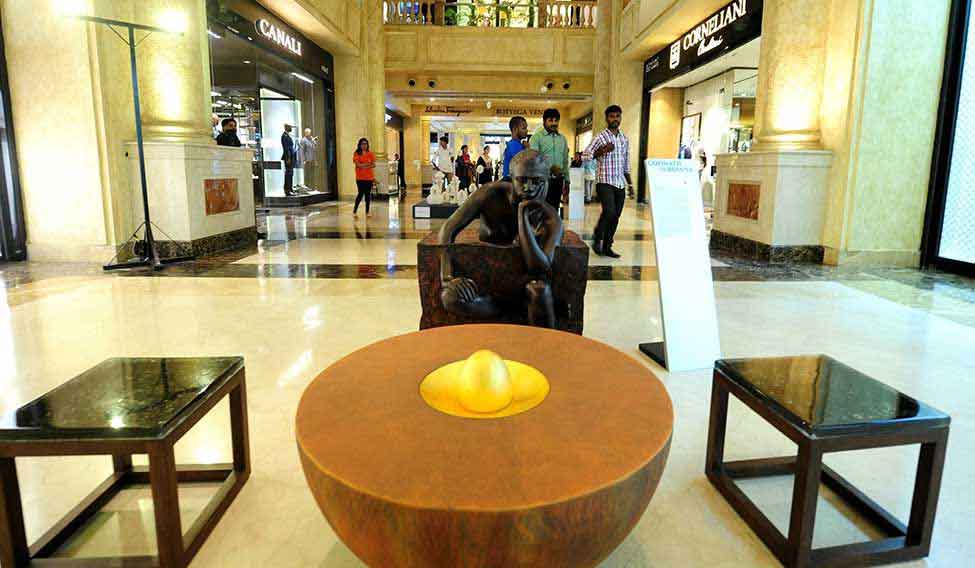Vanity, thy name is Bentley Mulsanne. But does a customised super luxury car with a price tag of Rs.6 crore qualify as a piece of art? Perhaps, yes. The aspirational brand signifies the 'paradigm shift' in our society, which was also the theme of the sixth edition of YES Bank Art Bengaluru festival, which was held from August 22 to 30.
At a time when art, like artists, is slowly moving out of the conventional art galleries, studios and museums to occupy a crowded mall, the work is sure speaking a new visual language. The festival, which showcased 35 works by national and international artists, was organised by The Collection at UB City and Sublime Galleria along with Prestige Group. The idea was to take art to the common man.
“Art in a public space is more democratic and interactive,” said Suresh Jayaram, curator of the show. “Today, malls are places where conversations begin. In the post capitalist context, mall is the new art destination. It promises to bring a change in the perception of art.”
The festival had an eclectic mix of items on display, from the footlockers used by soldiers to a granite cutter transformed into a medallion for the garden city that is metamorphosing into a concrete city, and decorated autorickshaws, which are an integral part of urban life.
French visual artist Nicolas Clauss, who left painting in 2000 and logged on to the interactive work on the internet, presented his works titled 'Endless Portraits'. His still images, however, looked anything but still. Take, for instance, the photo of a girl, who is completely still except for her hair that seems to be swaying in the wind or the portrait of a smoking man, with a cloud of smoke hanging around him. The new genre of video art is redefining art in the age of digital media. “A short film with no beginning or end, where moving images are both the language and the subject,” said Jayaram. “It is shown in a context like in a mall or a gallery.” According to Jayaram, video art has many takers, especially in the new-age public spaces.
Sandesh Kadur, through his photographs, emphasised the need for wildlife conservation. “We want people to contemplate on both the creativity and the ability of an artist to question reality,” said Jayaram.
Jeevan L. Xavier focused on non-institutionalised artistic practices in India. A designer by profession, Xavier put on display his decorated autorickshaw to depict the idea of belongingness, self-expression and finding one’s place in a city. Lin Hong Bo of China, on the other hand, displayed paper sculptures to show the interrelation between life and death. The mobile sculptures by Maria Antony Raj talked about feeding—on ideas, food and life’s fallacies, too.
Harisha Chennangod’s painting of a fragmented urban landscape in abstract but figurative representation had a parallel in Gigi Scaria’s work, which dealt with the painful truth of migration and displacement. Through a digital collage, Scaria explained how urban structures and social constructs translate to social prejudices.
Ace art director Thota Tharani put up a display titled 'Force of the wheel', which comprised a spiral cone in corrugated metal, to give out the message that nothing is easy in this world. A splash of colourful 'Sudarshan chakras', the chantings and vibration denoted the confluence of different forms of energy.







